p1-p4
1/37
There's no tags or description
Looks like no tags are added yet.
Name | Mastery | Learn | Test | Matching | Spaced |
|---|
No study sessions yet.
38 Terms
Independent variable
height of the ramp
Dependent variable
average speed of the marble down the ramp
Controlled variable
surface of the ramp
Apparatus
Wooden ramp about 120 cm long
Blocks of wood from about 5 cm high to about 15 cm high
Metre stick – to measure height of block and distance on runway
Pencil
Stopwatch
Marble

Method
Set up ramp against wooden block
Using ruler, draw two pencil lines in the ramp, one at top and other at the bottom
Measure the distance, x between these two lines (1m)
Measure the height of the ramp, h
Allow marble to roll down ramp, starting from rest at upper line and finishing at lower line
For each height h, time motion three times using stop watch and record the results in table
Calculate average time, t
Average speed is equal to x/t
Graph
average speed (y axis)
height, h (x axis)
line of best fit is curve through origin of decreasing gradient
shows average speed is not proportional to h, but increases non-linear
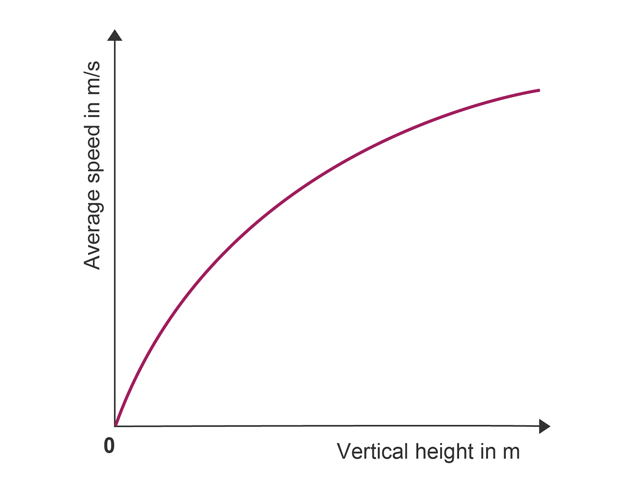
Results
as height of runway increases, average speed will also increase
Justification
as height increases GPE of marble will also increase
when moves down GPE is converted to kinetic energy
a greater amount of kinetic energy at bottom will have greater speed
Error
main error is reaction time using the stop clock
Safety
make sure the marble doesn’t fall on to the floor
secure the runway with a clamp
wear safety goggles
Independent variable
force applied to the free end of the spring
Dependent variable
extension of the spring
Controlled variable
spring constant
Apparatus
Safety spectacles – one pair for each learner
Helical spring
Retort stand, boss-head and clamp
G-clamp to clamp iron stand to bench
Mass hanger and slotted masses up to about 500 grams
Ruler
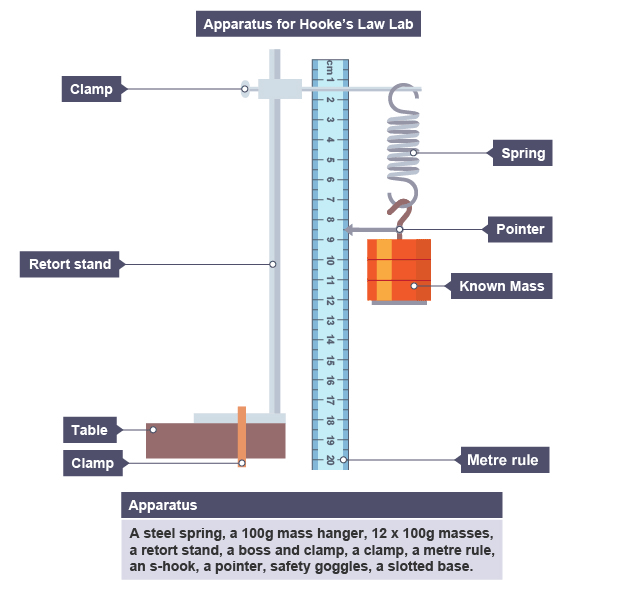
Method
Clamp retort stand with boss head and to bench
Attach helical spring and secure it
Measure natural length of spring with metre stick
Add 100g (1N) mass hanger
Measure extended length of the spring.
Calculate and record the extension
Add a second 100g mass
Repeat measurements and record results in a table
Plot graph of Force (load)/N) on the x-axis versus extension/cm on the y-axis
Graph
force/N (y axis)
extension/cm (x axis)
line of best fit is straight line through origin up to point
shows extension of spring is directly proportional to applied force up to limit of proportionality
beyond it is not proportional and extension increases significantly
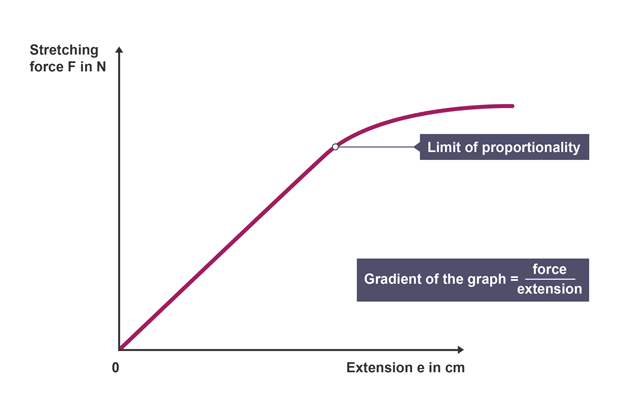
Results
as force applied increases, the extension of spring will also increase
Justification
greater stretching force has greater separation of atoms so increases length/ extension
Error
main error is reading stretched length of spring, keep at eye level
Safety
safety goggles must be worn
stretched spring could fly off
retort stand must be secured to bench to prevent it falling
Independent variable
forces applied to suspended metre rule
Dependent variable
distances from attached masses to pivot
Controlled variable
Apparatus
Retort stand, boss-head and clamp
G-clamp to clamp iron stand to bench
2 mass hangers and slotted masses up to 600 grams
Uniform wooden metre rule
Fine string
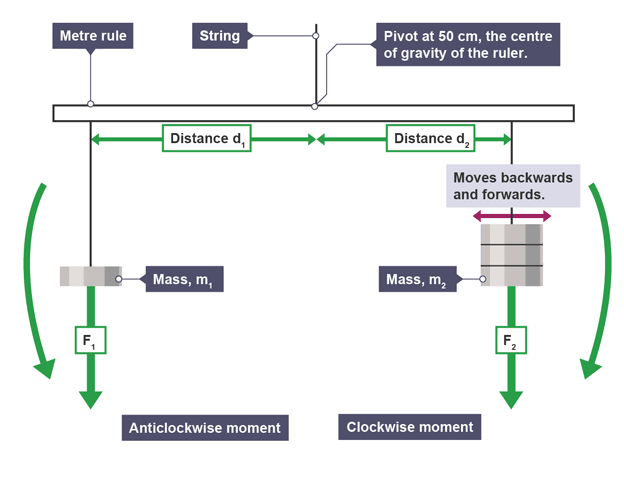
Method
Suspend and balance metre rule at 50 cm mark so it is in equilibrium
Using fine string, hang unequal masses, from either side of metre rule
Adjust position of masses until metre rule is balanced again
Record results in a table, and repeat for other loads/ distances
a force is trying to turn the metre stick anticlockwise/ clockwise
multiply force by distance to find their moments
Results
when metre rule is balanced the anticlockwise and clockwise moments are equal
Justification
principle of moments states, in equilibrium, total clockwise moment about a point equals total anticlockwise moment
Error
not balancing the metre rule correctly
Safety
Clamp retort stand to the bench so it doesn’t fall
Place an obstacle to prevent mass hangers falling on someone’s foot
Safety glasses should be worn
Independent variable
vertical height of stairs
Dependent variable
time taken to run up stairs
Controlled variable
mass of the student
Apparatus
Flight of stairs (or stepping platform)
Bathroom/ newton scales to measure mass of a student
Metre stick or ruler
Stopwatch
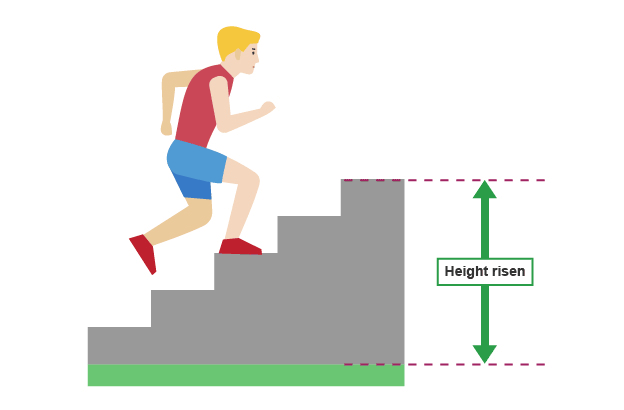
Method
student uses bathroom scales to find mass in kilograms
mass is multiplied by 10 to find force in N
measure height of steps on staircase to determine average height
multiply number steps by average height to find vertical height h of the staircase
another student at the top uses a stopwatch to measure time taken to run up the stairs
experiment should be repeated to find an average
Results
divide work done (force x vertical height) by time taken

Justification
a heavier person requires more power to complete experiment in same time as a lighter person
Error
fewer stairs have shorter time and error in measured time increases to an unacceptable level
Safety
running up stairs quickly makes it easy to fall
only one person at a time to prevent collisions